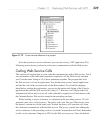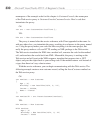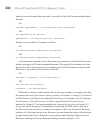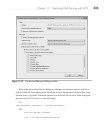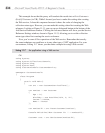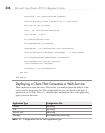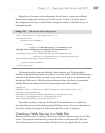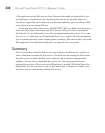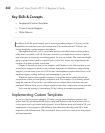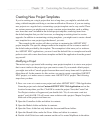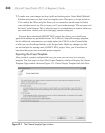
Chapter 11: Deploying Web Services with WCF 337
Regardless of the name, each configuration file will have a system.serviceModel
element with configuration settings for the Web service. Listing 11-8 shows parts of
the configuration file that you should find to change the address of the W
eb service to
communicate with.
Listing 11-8 Web service client configuration
<?xml version="1.0" encoding="utf-8" ?>
<configuration>
<system.serviceModel>
...
<client>
<endpoint address="http://localhost:8732
/Design_Time_Addresses/WcfDemoCS/CustomerService /"
binding="wsHttpBinding"
bindingConfiguration="WSHttpBinding_ICustomerService"
contract="CustomerService.ICustomerService"
name="WSHttpBinding_ICustomerService">
...
</system.serviceModel>
</configuration>
Following the path system.serviceModel, client, endpoint, you’ll find an address
attribute. In the preceding example, the address is set to the address of the WcfDemo project
inside the same solution. When you deploy your client, you’ll want it to communicate with
the deployed Web service. The following modification allows this client to communicate
with the Web service deployed to IIS as discussed previously in this chapter:
<endpoint
address="http://localhost:8080/WcfDemoCS.CustomerService.svc"
binding="wsHttpBinding"
bindingConfiguration="WSHttpBinding_ICustomerService"
contract="CustomerService.ICustomerService"
name="WSHttpBinding_ICustomerService">
The address includes a filename, WcfDemoCS.CustomerService.svc, which was
automatically generated when deploying the WcfDemo service. You can see the name of
this file by looking at the physical folder where the Web service is deployed.
Creating a Web Service in a Web Site
The previous discussion of creating a Web service created a separate project for the Web
service. This approach assumes that you have the ability to configure an IIS Web site
for the Web service and can have another IIS Web site for your application if you have



